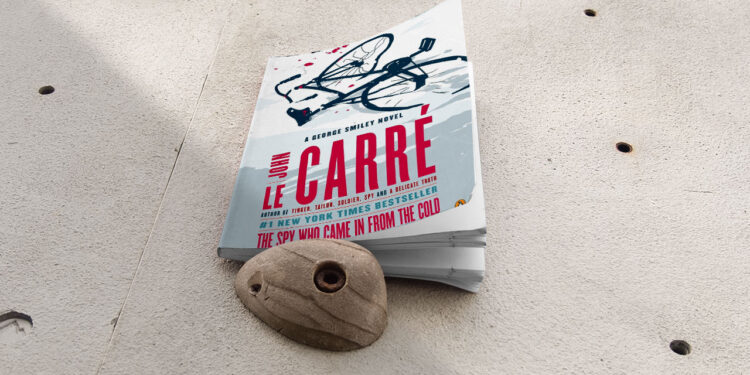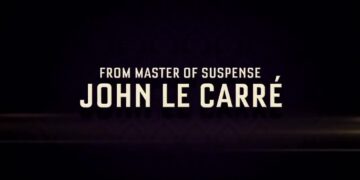When we speak of the world of espionage and mystery, one name springs immediately to mind: John le Carré. Born as David John Moore Cornwell, he adopted the pseudonym John le Carré to pen some of the most intriguing spy novels of the 20th century. His craft of storytelling and ability to create complex characters has left an indelible mark on literature, media, and cinema, turning him into a towering figure in the world of espionage fiction.
Le Carré’s books, often set against the backdrop of the Cold War, have touched millions worldwide, his intricate plots and realistic portrayal of the spy world resonating with readers and viewers alike. His influence extends beyond the realm of literature, with many of his works adapted into successful films and TV series, thus shaping the media’s portrayal of espionage.
Despite his passing, John le Carré’s influence remains steadfast. His works continue to inspire and captivate, and his legacy lives on through the writers, directors, and actors who have been influenced by his unique storytelling style.
An exploration of John le Carré’s Bio
John le Carré was born on October 19, 1931, in Poole, Dorset, England. His tumultuous childhood, marked by his mother’s departure when he was only five and a conman father who was frequently in and out of prison, had a profound impact on his writing. He attended the University of Bern in Switzerland and then studied at Oxford University before joining the British Army.
Le Carré’s experience in the intelligence services, including his stint as an MI5 and MI6 officer, greatly influenced his writing. His first novel, “Call for the Dead,” was published in 1961, but it was his third book, “The Spy Who Came in from the Cold,” that shot him to international fame. He continued to use his experiences and observations from his time in the intelligence services to craft realistic and compelling spy thrillers.
Despite his fame, le Carré remained a private individual, avoiding the limelight and focusing on his craft. His books provide a window into his world, reflecting his views on politics, human nature, and the often morally ambiguous world of espionage.
Is John le Carré still alive?
John le Carré passed away on December 12, 2020, at the age of 89. He left behind a legacy of captivating and thought-provoking novels that continue to inspire readers and filmmakers alike. His death was a significant loss for the literary world, but his influence endures through his timeless works.
Le Carré’s death was met with a global outpouring of grief and tributes from fans, fellow authors, and filmmakers. His contribution to the genre of spy fiction, his unique storytelling style, and his nuanced portrayal of the world of espionage continue to be celebrated, making him a literary icon whose influence transcends his death.
Despite his passing, le Carré’s works continue to be widely read and adapted. His books’ timeless appeal, coupled with their continued relevance in today’s world, ensures that his legacy lives on.
The best of John le Carré: Listing and briefly describing his 5 best books
John le Carré’s literary career spanned six decades, during which he wrote 25 novels. While it’s hard to choose the best among his works, some stand out for their storytelling, characters, and impact on the genre of spy fiction.
“The Spy Who Came in from the Cold” (1963): This novel catapulted le Carré to international fame. It tells the story of Alec Leamas, a burnt-out British spy, in a gripping tale of deception and betrayal.
“Tinker, Tailor, Soldier, Spy” (1974): One of his most acclaimed novels, it introduced the character of George Smiley and his hunt for a Soviet mole in British Intelligence.
“The Little Drummer Girl” (1983): This book deviates from the Cold War setting and delves into the Israeli-Palestinian conflict, showcasing le Carré’s ability to explore different geopolitical contexts.
“The Night Manager” (1993): This novel explores the world of arms dealers and the moral compromises made in the name of national security. It was adapted into a successful TV series starring Tom Hiddleston.
“Our Kind of Traitor” (2010): This book focuses on a young English couple who get caught up in the world of Russian mafia and British Intelligence, highlighting le Carré’s ability to weave complex narratives.
Hidden gems and trivia about John le Carré
While le Carré is well-known for his spy novels, there are many lesser-known facts about his life and works. His pseudonym, for example, was chosen simply because he thought it sounded mysterious and enticing. The name “John le Carré” has no specific meaning, contrary to what many believe.
Le Carré’s novels are often praised for their realism, a result of his experiences in the intelligence services. However, he insisted that his books were not autobiographical. Instead, he drew inspiration from the people and situations he encountered during his time as a spy.
Despite his success, le Carré refused to allow his books to be featured in the Queen’s Honours list, a testament to his disdain for public recognition and his desire to let his works speak for themselves.
John le Carré’s personal life: love life and friendships
John le Carré was married twice in his lifetime. His first marriage to Alison Sharp in 1954 resulted in three children but ended in divorce. In 1972, he married Valérie Jane Eustace, a book editor, with whom he had one son. Despite the tumult and intrigue present in his novels, le Carré’s second marriage was noted for its stability and longevity.
Le Carré formed many friendships throughout his life, including with fellow authors. One of his most notable friendships was with Graham Greene, another renowned author of spy novels. The two shared a mutual respect and admiration for each other’s work.
Rich or Poor? John le Carré’s financial journey
John le Carré’s financial journey is a story of success borne out of talent and hard work. Despite his humble beginnings and a childhood marked by financial instability, le Carré achieved considerable success with his novels. His books have sold millions of copies worldwide, and many have been adapted into films and TV series, contributing to his financial success.
Le Carré’s wealth, however, did not change his outlook towards life. He remained a private individual, choosing to live a simple life away from the public eye. His focus remained, always, on his craft and his desire to tell compelling stories.
Inspirational wisdom: best quotes from John le Carré
John le Carré’s novels are not only gripping tales of espionage but also profound explorations of human nature, morality, and the complexities of the world. His wisdom, often reflected in memorable quotes from his books, continues to inspire readers. Here are some of his best quotes:
“Love is whatever you can still betray… Betrayal can only happen if you love.” – “The Spy Who Came in from the Cold”
“A desk is a dangerous place from which to view the world.” – “Tinker, Tailor, Soldier, Spy”
“The monsters of our childhood do not fade away, neither are they ever wholly monstrous.” – “The Secret Pilgrim”
The world of John le Carré: listing the main places where his books are set
John le Carré’s books are set in various locations worldwide, reflecting the global nature of espionage. From the cold streets of Berlin to the bustling cities of Southeast Asia, his settings are as diverse as his characters.
“The Spy Who Came in from the Cold” is set mainly in East and West Berlin, capturing the tension and intrigue of the Cold War era.
“Tinker, Tailor, Soldier, Spy” takes readers to London, Budapest, and Hong Kong as George Smiley hunts for a Soviet mole.
“The Constant Gardener” is set in Kenya, and it explores the complexities of international diplomacy and corporate greed.
“The Tailor of Panama” takes us to Panama City, where a British tailor becomes embroiled in a dangerous game of deception.
“The Night Manager” spans numerous locations, including Cairo, Switzerland, and the Caribbean, reflecting the global operations of arms dealers.
The beginning and end: Exploring John le Carré’s first and last books
John le Carré’s first book, “Call for the Dead” (1961), introduces George Smiley, a character who would become a mainstay in many of his novels. The book is a murder mystery that lays the groundwork for the intricate spy novels that would follow.
Le Carré’s last published novel during his lifetime, “Agent Running in the Field” (2019), is a return to the world of British intelligence. The novel, set in London in 2018, reflects le Carré’s views on Brexit and the current political climate.
Despite the years separating these two books, both display le Carré’s masterful storytelling, his deep understanding of the world of espionage, and his ability to create complex and compelling characters.
John le Carré’s books in order
John le Carré’s books, while standalone novels, often share common characters and themes. Here is a list of his books in chronological order:
- “Call for the Dead” (1961)
- “A Murder of Quality” (1962)
- “The Spy Who Came in from the Cold” (1963)
- “The Looking Glass War” (1965)
- “A Small Town in Germany” (1968)
(Continue the list until “Agent Running in the Field” (2019))
A look at the screen adaptation of ‘Our Kind of Traitor’
“Our Kind of Traitor,” published in 2010, was adapted into a film in 2016. The movie, like the book, tells the story of a young English couple who become embroiled in the dangerous world of the Russian mafia and British Intelligence.
The film, starring Ewan McGregor and Naomie Harris, captures the suspense and intrigue of le Carré’s novel. Despite some changes from the book, the adaptation stays true to le Carré’s nuanced portrayal of the world of espionage.
Other artists who inspired John le Carré
John le Carré was inspired by various authors and artists throughout his career. He was particularly influenced by Graham Greene, whose books about morally ambiguous spies resonated with him. Le Carré also admired the works of Joseph Conrad, whose exploration of moral and psychological complexities influenced his own approach to writing.
If you liked John le Carré: listing and briefly describing 5 other writers and books to read
If you’ve enjoyed John le Carré’s books, here are some other authors and books you might like:
- “The Quiet American” by Graham Greene: This novel explores the complexities and moral ambiguities of war and espionage, much like le Carré’s works.
- “The Day of the Jackal” by Frederick Forsyth: A gripping thriller about an assassin hired to kill Charles de Gaulle.
- “The Riddle of the Sands” by Erskine Childers: Considered one of the first spy novels, this book offers a blend of adventure and intrigue.
- “The Bourne Identity” by Robert Ludlum: This novel, the first in the Jason Bourne series, offers a fast-paced and action-packed spy thriller.
- “Berlin Game” by Len Deighton: Set during the Cold War, this novel explores the world of British Intelligence, much like le Carré’s books.
Conclusion: John le Carré’s lasting impact on media and cinema
John le Carré’s influence on media and cinema is unparalleled. His books, with their complex characters and intricate plots, have been the basis for numerous successful films and TV series. His realistic portrayal of the world of espionage has shaped the way spy stories are told, making him a touchstone in the genre.
Despite his passing, le Carré’s impact remains. His books continue to captivate readers, and his stories continue to be adapted for the screen. His legacy endures, his works serving as a testament to his storytelling prowess and his unique insights into the world of espionage.
As we delve into the secret life of John le Carré, we find a man who not only shaped the genre of spy fiction but also left an indelible mark on media and cinema. His life, as intriguing as his novels, continues to inspire, making John le Carré a figure whose influence transcends time and borders.











